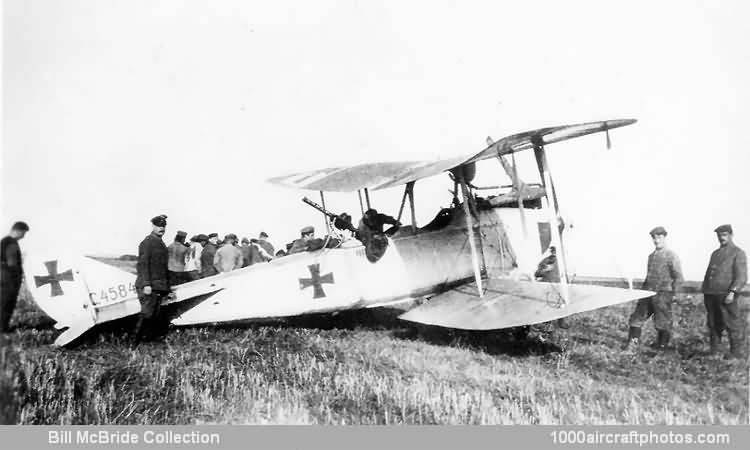02/28/2010. Remarks by Johan Visschedijk: "In the 198 B.I two-seat reconnaissance biplanes produced by the Edmund Rumpler Flugzeugwerke, that preceded the C.I, the observer occupied the front cockpit where he was surrounded by a maze of struts and cables making the use of a carbine or rifle, extremely difficult. The disadvantages of the B-type were partially overcome by the introduction of the C-type. In the C.I the position of pilot and observer were reversed, armament now consisting of a machine gun in the rear cockpit. With the advent of an effective synchronizing gear, an additional fixed forward-firing Maxim 08/15 machine gun was added for the pilot.
Rumpler's first C-type appeared in early 1915 with the factory designation 5A 2. The Rumpler C.I was a conventional biplane of wooden construction (apart from steel tube lateral and vertical spacers in the nose), covered with fabric and plywood; a metal cowling covered the engine. The exhaust was taken vertically downward and discharged just under the lower longeron. The prototype had a pillar mount for a Parabellum in the rear cockpit. The production model had a Schneider gun ring and the exhaust was carried upward to discharge over the upper wing, while a more refined gravity fuel tank was fitted.
Large orders were placed with Rumpler at Johannisthal and license production was also undertaken by Germania, Markische Flugzeug-Werft, Hansa-Brandenburg and Albert Rinne Flugzeugwerke, these building the C.I with the 160 hp Mercedes D.III six-cylinder liquid-cooled in-line engine. Bayerische Rumpler-Werke built a variant of the type with the 150 hp Benz Bz III engine while the Hannoversche Waggonfabrik AG received orders for 375 Rumpler C.Ia biplanes fitted with the 180 hp Argus As. III. The Hannover C.Ia was easily distinguished by its built-up rear fuselage and raised gun ring. The type continued to be built as a trainer by licensed manufacturers up until the Armistice of 1918.
Introduced in service during the fall of 1915, the C.I was an outstanding aircraft and quickly proved itself at the Front. By October 31 there were 231 C.I and two C.Ia Rumpler biplanes in France. It soon became the third most numerous C-type at the Front after the Albatros and LVG C.I biplanes, being so effective that small numbers were still in front-line service in Palestine, Macedonia and Salonika as late as February 1918, long after it was outclassed on the Western Front.
The Netherlands used three Rumpler C.I biplanes although it never actually purchased any, they were interned in 1917/1918 after their cerws unwillingly landed on neutral Dutch soil; they were scrapped in 1925. Other nations that used the C.I in small numbers were Latvia, Lithuania and Poland."
